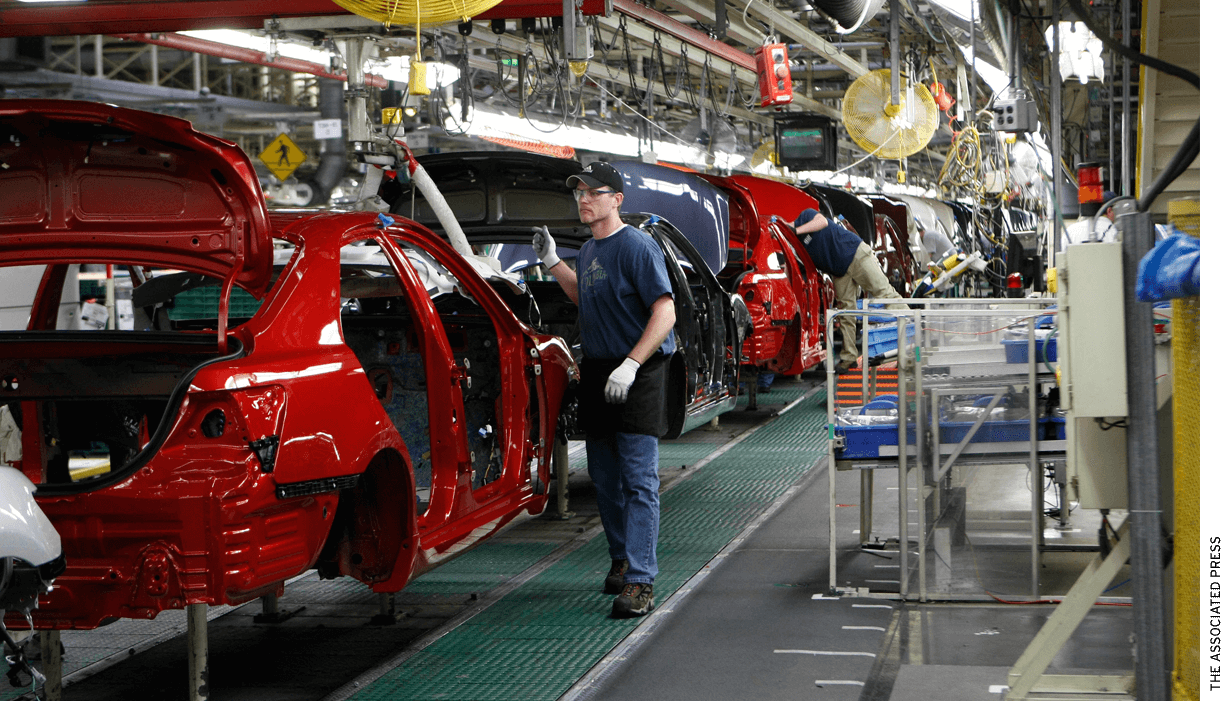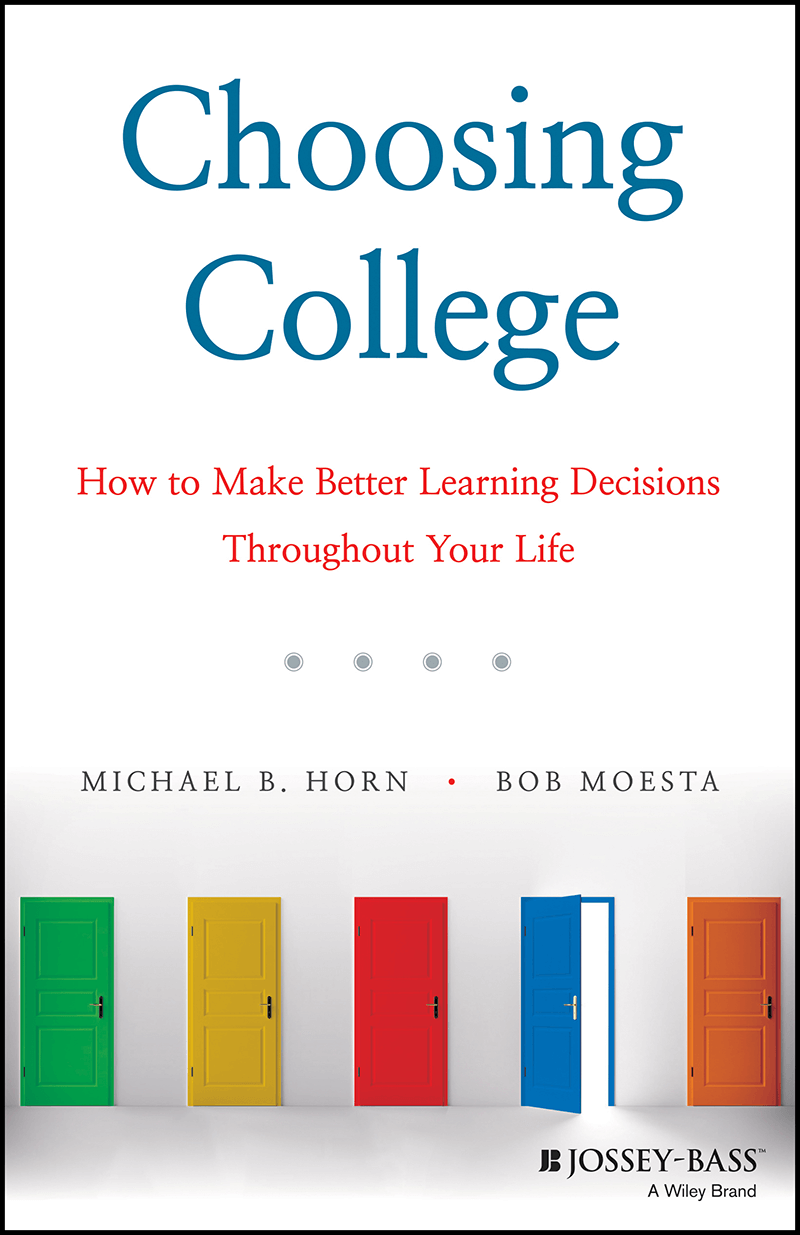
Michael B. Horn and Bob Moesta’s new book, Choosing College: How to Make Better Learning Decisions Throughout Your Life (Jossey-Bass, 2019, $25, 304 pages), aims to help students and parents make better decisions around postsecondary education by understanding the reasons they are seeking to enroll. It also offers advice to institutions on how to structure themselves better to optimize for student success. In this modified excerpt, Horn and Moesta describe why raising standards, being more rigorous, and moving to a mastery-based learning system would be a positive for colleges.
Raising standards may seem counterintuitive given our advice to schools to enable people to acknowledge where they are in life and not have to grandstand to gain acceptance. Schools must know their focus and strengths (and be honest about them) as well as their limitations.
What we mean is that schools should set clear standards for graduating and hold to them. We don’t mean only around academics, either. Students are not just functional beings, but emotional and social ones as well. If your program is designed to help people discover whom they are and what they want to do next, do not let them graduate until they have done that.
And be rigorous. Make sure people truly master what it is they do at your school—be it an academic topic, a life skill, or understanding oneself. Learning is hard, and it is humbling. Yet somehow we have confused the time spent at an institution or teaching—both inputs—for learning, which is an outcome. We act as though just because a teacher has appeared in front of students and lectured or because students were enrolled somewhere for four years that the students were ready to learn and have learned. Because of how our education system has unfolded over the past 150 years, many if not most students have not been prepared to learn for a long time now. It is time to take responsibility to make sure students are ready to learn and will learn and then appropriately serve them.
A story from our friend Steve Spear, a senior lecturer at MIT, illustrates what we mean. While a doctoral student, Steve took temporary jobs installing seats on an assembly line at one of the Detroit Big Three automakers and then at Toyota.
 In Detroit, Steve was told, “The cars come down this line every 58 seconds, so that’s how long you have to install this seat. Now I’m going to show you how to do it. First, you do this. Then do that, then click this in here just like this, then tighten this, then do that,” and so on. “Do you get how to do it, Steve?”
In Detroit, Steve was told, “The cars come down this line every 58 seconds, so that’s how long you have to install this seat. Now I’m going to show you how to do it. First, you do this. Then do that, then click this in here just like this, then tighten this, then do that,” and so on. “Do you get how to do it, Steve?”
Steve thought he could do those things in the allotted time. When the next car arrived, he tried to install the seat but it would not fit. For the entire 58 seconds, he tried to complete the installation. His trainer stopped the line and again showed Steve how to do it. When the next car arrived, Steve still couldn’t get it right. In an entire hour, he installed just four seats.
It was historically important to test every product when it came off the end of a production line like the Detroit Big Three’s because the company couldn’t be sure that each step—among hundreds—had been done correctly. In business, we call that “inspection.” In education, we call it “summative assessment.”
When Steve went to work at Toyota, he had a completely different experience. First, he went to a training station where he was told, “These are the seven steps required to install this seat successfully. You don’t have the privilege of learning step 2 until you’ve demonstrated mastery of step 1. If you master step 1 in a minute, you can begin learning step 2 a minute from now. If step 1 takes you an hour, then you can learn step 2 in an hour.” And so forth.
That is quite a contrast between two methods of training. At the Detroit plant, the time was fixed, but the result of training was variable and unpredictable. The “exam”—installing the seat—came at the end of Steve’s training.
At Toyota, training time was variable. But assessment was woven into the learning, and the result was fixed: every person trained could predictably do what he or she had been taught.
The Detroit example represents how most American schools operate. They were modeled on factories built during the Industrial Revolution. Toyota illustrates a competency-based, or mastery, learning system. Many postsecondary programs should move to a system in which students progress when they have mastered whatever the objective is. This may not matter today for students who are focused more on getting into the best school for its own sake—as opposed to focusing on the learning—or for a segment of those who are seeking to learn more for its own sake, but don’t need the learning to improve their lives. But for most students, this would be helpful. And the central message can carry over to whatever a school claims it does for students’ growth, even if that value lies outside the traditional academic classroom.
There is another important part of the Toyota story. Each step in the production of a car has an obligation to reject any vehicle where a prior step wasn’t completed correctly. Colleges and universities would be wise to begin to do the same and push high schools and other feeder schools —community colleges or undergraduate programs—to raise the bar and move to a mastery-based system. Within colleges, individual classes and professors can force prerequisite classes to do the same. Ultimately, this would raise standards by embedding rework stations throughout the educational process—not remedial classes where students who do not pass certain tests are sent to take non-credit-bearing classes, often dooming them to fail.
Michael B. Horn is co-founder of the Clayton Christensen Institute for Disruptive Innovation and an executive editor at Education Next. Bob Moesta is co-founder and president of the ReWired Group and is also a fellow at the Clayton Christensen Institute for Disruptive Innovation.


